Wooten Recycles with Open Graded Friction Course
BY AsphaltPro Staff
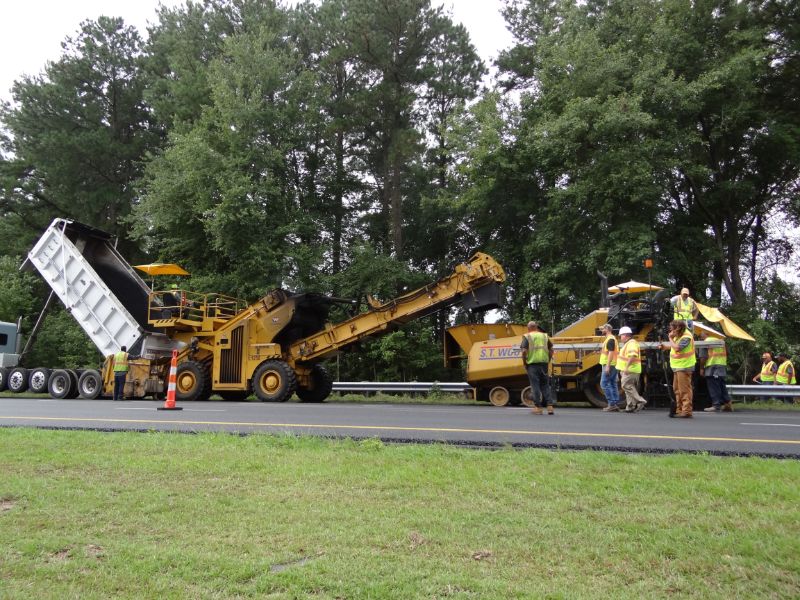
Milling and filling took on a safety role with the placement of an open graded friction course (OGFC) on Interstate 795 (I-795) in Wilson County, North Carolina. Multiple crews from S. T. Wooten Corporation, headquartered in Wilson, took on the task for North Carolina Department of Transportation (NCDOT) in summer 2019 to re-pave an important 4-mile stretch of highway to prepare for increasing traffic. Paving of mile marker 38 + 17 to mile marker 42 + 60 started July 24, ended Aug. 29, with a project completion date of Oct. 16. Wooten’s Quality Control and Materials Manager for the Asphalt Division Chris Croom answered our questions about the project, starting with the plant and the excellent communication among production and field personnel.
Q: Tell readers about the communication between the plant operator and the foreman on the job:
A: We produced the mix with an Astec double barrel plant located in Sims, North Carolina. The west end of the project is located about 5 miles from the plant. In total, S. T. Wooten placed 33,091 tons of mix on the project, which includes 25,077 tons of S9.5D and 8,014 tons of OGFC FC-1 Modified.
There was excellent communication between plant, paving and trucking supervision and the quality control personnel that worked on this project. All our employees communicated regularly regarding production and trucking needs, equipment, raw materials, traffic control, safety and QC testing of the mix both at the plant and on the roadway. The communication and strong relationships between members greatly contributed to our success on this project.
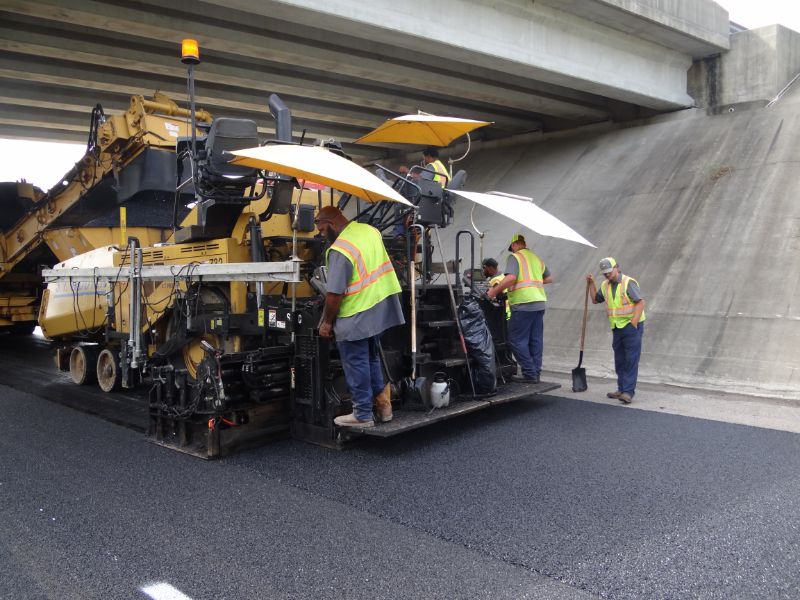
Milling the existing pavement and maintaining a cut to provide a 0.25 slope was subcontracted, then the paving crews came in to place the S9.5D and FC-1 Modified mixes.
Q: How was the mix produced and what percentage of recycled asphalt material was included?
A: The mix was produced as a traditional hot-mix asphalt. Both the S9.5D and FC-1 Modified mixes were produced with polymer-modified PG76-22 at temperatures between 310 and 325 degrees Fahrenheit. S. T. Wooten used a high-quality, low moisture content granite coarse and fine aggregates along with natural sand during production of the mixes.
We also used RAP in the S9.5D and recycled shingles in the FC-1 Modified. The Astec double barrel plant used a variable speed drum with V flights to consistently dry the aggregates, reducing segregation of the mix, therefore providing a more uniform mix during lay-down.
NCDOT specifies a maximum of 18 percent for virgin binder, which for the polymer-modified mixes can be replaced by recycled binder. RAP is currently not allowed in OGFC FC-1 Modified. However, recycled shingles are allowed for OGFC FC-1 Modified and were used on this project. Recycled shingles were also used in the FC-1 Modified mix. The specifications require that the shingles be ground so that 100 percent of the material passes a 3/8-inch sieve.
Q: What were the types and grades of stone used?
A: Granite #78m stone and blended screenings. Locally mined natural sand.
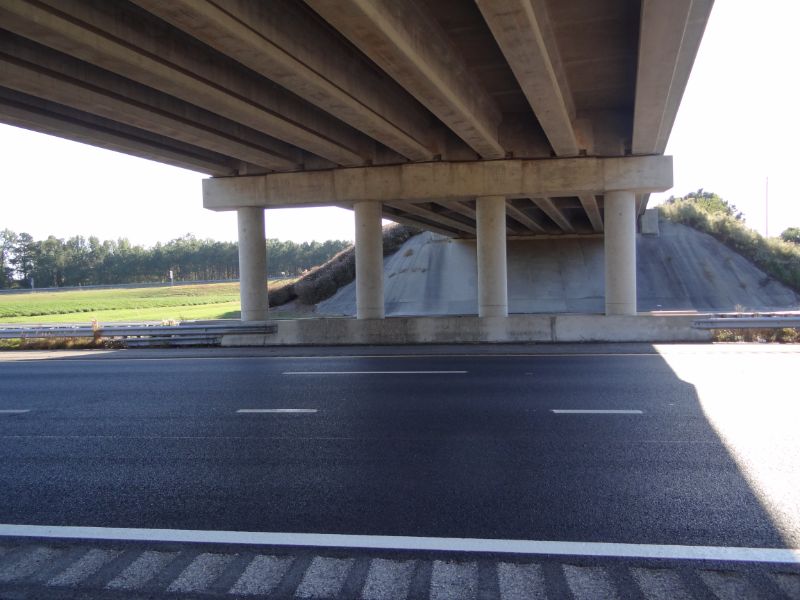
Chris Croom stated the finished product is already helping to facilitate better conditions for the traveling public.
Q: What was the milling depth and was it intended to remove imperfections/correct slope for the OGFC drainage?
A: The milling depth was 0.75 to 2.75 inches. This variable depth milling was performed to remove deteriorated asphalt mix and to correct the slope to 0.25 prior to paving with the S9.5D mix. This in turn improves drainage and helps to facilitate the use of the FC-1 Modified mix as a public safety tool.
Q: Which S.T. Wooten crew performed the paving and what was the depth of the surface lift?
A: We had various paving crews working on the job who were led by Foreman C. J. Bryant. Depth wise, there was a 2-inch S9.5D lift with ¾ inches of FC-1 Modified for the final lift.
Q: Tell the readers about the compaction train:
A: S.T. Wooten used two CAT CB-64 steel-wheel vibratory rollers on the S9.5D and FC-1 Modified mixes. One CAT CB-34 combination roller was also used on the S9.5D mix. All roller patterns were based on nuclear density gauge testing. (IC) was not used on this project.
Q: Was a test strip required to determine the rolling pattern prior to getting on I-795?
A: Nuclear gauge testing was used for density acceptance on the project. A test strip or “control strip” was placed at the start of paving and then every 14 calendar days thereafter, as required by the specifications. The roller pattern is established during construction of the control strip to achieve the density required and to correlate the gauge to cores obtained from the mat.
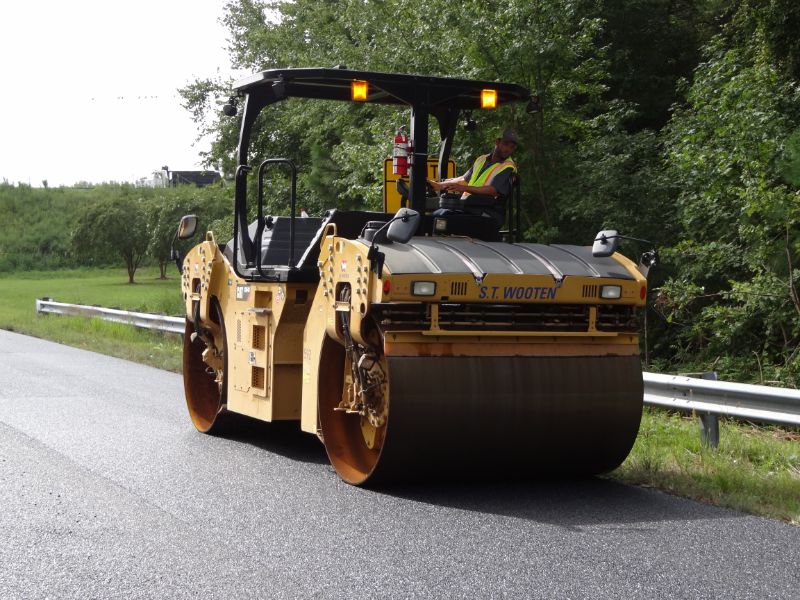
The specification required a minimum of two steel-wheel tandem rollers. The rolling was limited to one coverage with a tandem steel-wheel roller weighing a maximum of 10 tons, with additional rolling limited to one coverage with the roller where necessary to improve the riding surface. No vibration was allowed during the finish rolling phase.
Q: What was the rolling pattern the team had success with for the OGFC and what were the density numbers that NCDOT recorded?
A: The NCDOT does not have a density requirement of OGFC. The specification requires that we use a minimum of two steel-wheel tandem rollers. The rolling is limited to one coverage with a tandem steel-wheel roller weighing a maximum of 10 tons, with additional rolling limited to one coverage with the roller where necessary to improve the riding surface. No vibration is allowed during the finish rolling phase.
Q: What additional safety measure(s) did the team put into practice, beyond the required/MUTCD best practices?
A: We work closely with the NCDOT to ensure we’re meeting requirements and best practices for safety. We’re proud of the solid track record we have for protecting travelers and crew members on road construction projects.
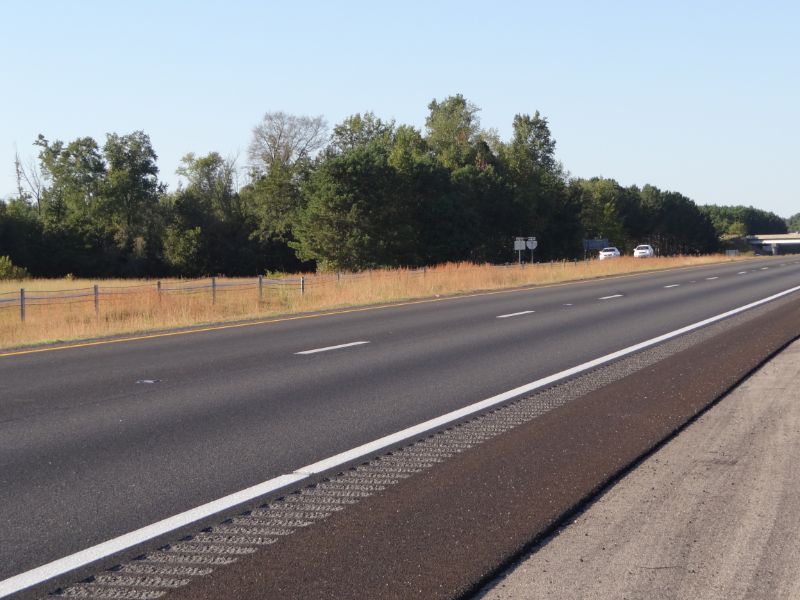
Chris Croom stated the finished product is already helping to facilitate better conditions for the traveling public.
Q: What is the No.1 facet of the I-795 project that you, personally, are most proud of?
A: As an end-result, I’m proud of the quality ride the new pavement gives drivers on the road. I also take pride in the appearance of the final product, and the fact that we managed to complete the project having only one transverse joint in the FC-1 Modified pavement.
Q: Which team member went above-and-beyond with a specific “assist” on the I-795 project, and what was that extra effort?
A: Foreman Bryant was instrumental in assisting the milling subcontractor with maintaining a cut to provide a 0.25 slope. As the paving crew leader, he also insured that mix was placed correctly and the communications with the plant, trucking and QC was smooth.
As mentioned previously, the entire team worked incredibly well together in communicating and coming together to make sure the job was done right.
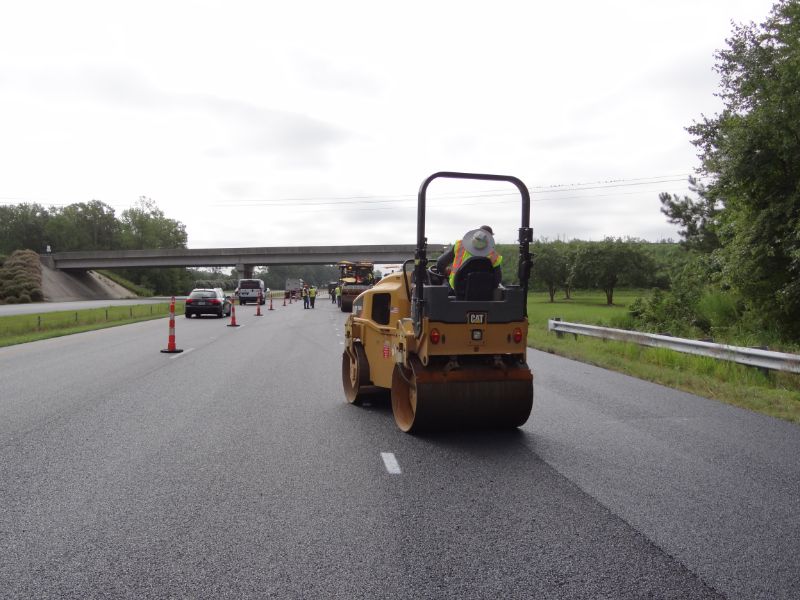
The specification required a minimum of two steel-wheel tandem rollers. The rolling was limited to one coverage with a tandem steel-wheel roller weighing a maximum of 10 tons, with additional rolling limited to one coverage with the roller where necessary to improve the riding surface. No vibration was allowed during the finish rolling phase.
Q: Which S. T. Wooten mix design technicians (or other personnel) assisted NCDOT in deciding on the OGFC?
A: The decision to use OGFC FC-1 Modified mix was made solely by the NCDOT. The mix was designed by S. T. Wooten Senior Mix Design Technician Everett Thornton and Quality Control Manager Jeffrey Johnson.
This stretch of I-795 has a history of high accident rates due to hydroplaning during heavy rainstorms. Because of this, the NCDOT specified the use of OGFC FC-1 Modified to improve water drainage and friction for drivers on the road. Having wrapped up [in October], the finished product is already helping to facilitate better conditions for the traveling public.
